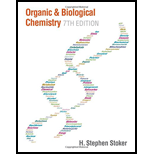
Organic And Biological Chemistry
7th Edition
ISBN: 9781305081079
Author: STOKER, H. Stephen (howard Stephen)
Publisher: Cengage Learning,
expand_more
expand_more
format_list_bulleted
Concept explainers
Textbook Question
Chapter 3, Problem 3.12EP
Write a condensed structural formula for each of the following alcohols.
- a. 2-Methyl-2-heptanol
- b. 3-Ethyl-2-pentanol
- c. 3-Phenyl-1-butanol
- d. 3,5-Dimethylcyclohexanol
Expert Solution & Answer
Trending nowThis is a popular solution!

Students have asked these similar questions
Select the general class of compounds you would expect to have the highest boiling point.
A. Aldehydes
B. Esters
C. Alkanes
D. Alcohols
How would you synthesize each of the following?a. 1,2-dibromopropane from propeneb. acetone (2-propanone) from an alcoholc. tert-butyl alcohol (2-methyl-2-propanol) from an alkene (See Exercise 62.)d. propanoic acid from an alcohol
The dehydration of an alcohol produces which organic functional group and steam?
a. alkyne
b. aldehyde
c. alkene
d. ketone
e. carboxylic acid and an alcohol
Chapter 3 Solutions
Organic And Biological Chemistry
Ch. 3.1 - Prob. 1QQCh. 3.1 - Prob. 2QQCh. 3.2 - Prob. 1QQCh. 3.2 - Prob. 2QQCh. 3.2 - Prob. 3QQCh. 3.3 - Prob. 1QQCh. 3.3 - Prob. 2QQCh. 3.3 - Prob. 3QQCh. 3.3 - Prob. 4QQCh. 3.4 - Prob. 1QQ
Ch. 3.4 - Prob. 2QQCh. 3.4 - Prob. 3QQCh. 3.5 - Prob. 1QQCh. 3.5 - Prob. 2QQCh. 3.5 - Prob. 3QQCh. 3.5 - Prob. 4QQCh. 3.6 - Prob. 1QQCh. 3.6 - Prob. 2QQCh. 3.6 - Prob. 3QQCh. 3.7 - Prob. 1QQCh. 3.7 - Prob. 2QQCh. 3.8 - Prob. 1QQCh. 3.8 - Prob. 2QQCh. 3.9 - Prob. 1QQCh. 3.9 - Prob. 2QQCh. 3.9 - Prob. 3QQCh. 3.9 - Prob. 4QQCh. 3.9 - Prob. 5QQCh. 3.9 - Prob. 6QQCh. 3.10 - Prob. 1QQCh. 3.10 - Prob. 2QQCh. 3.11 - Prob. 1QQCh. 3.11 - Prob. 2QQCh. 3.11 - Prob. 3QQCh. 3.12 - Prob. 1QQCh. 3.12 - Prob. 2QQCh. 3.13 - Prob. 1QQCh. 3.13 - Prob. 2QQCh. 3.13 - Prob. 3QQCh. 3.14 - Prob. 1QQCh. 3.14 - Prob. 2QQCh. 3.14 - Prob. 3QQCh. 3.15 - Prob. 1QQCh. 3.15 - Prob. 2QQCh. 3.15 - Prob. 3QQCh. 3.15 - Prob. 4QQCh. 3.16 - Prob. 1QQCh. 3.16 - Prob. 2QQCh. 3.17 - Prob. 1QQCh. 3.17 - Prob. 2QQCh. 3.17 - Prob. 3QQCh. 3.18 - Prob. 1QQCh. 3.18 - Prob. 2QQCh. 3.18 - Prob. 3QQCh. 3.19 - Prob. 1QQCh. 3.19 - Prob. 2QQCh. 3.20 - Prob. 1QQCh. 3.20 - Prob. 2QQCh. 3.20 - Prob. 3QQCh. 3.20 - Prob. 4QQCh. 3.20 - Prob. 5QQCh. 3.21 - Prob. 1QQCh. 3.21 - Prob. 2QQCh. 3.21 - Prob. 3QQCh. 3.21 - Prob. 4QQCh. 3.21 - Prob. 5QQCh. 3 - Prob. 3.1EPCh. 3 - Indicate whether or not each of the following...Ch. 3 - Prob. 3.3EPCh. 3 - Prob. 3.4EPCh. 3 - Prob. 3.5EPCh. 3 - Prob. 3.6EPCh. 3 - Prob. 3.7EPCh. 3 - Prob. 3.8EPCh. 3 - Prob. 3.9EPCh. 3 - Prob. 3.10EPCh. 3 - Write a condensed structural formula for each of...Ch. 3 - Write a condensed structural formula for each of...Ch. 3 - Prob. 3.13EPCh. 3 - Prob. 3.14EPCh. 3 - Prob. 3.15EPCh. 3 - Prob. 3.16EPCh. 3 - Prob. 3.17EPCh. 3 - Prob. 3.18EPCh. 3 - Prob. 3.19EPCh. 3 - Prob. 3.20EPCh. 3 - Prob. 3.21EPCh. 3 - Prob. 3.22EPCh. 3 - Prob. 3.23EPCh. 3 - Prob. 3.24EPCh. 3 - Prob. 3.25EPCh. 3 - Prob. 3.26EPCh. 3 - Prob. 3.27EPCh. 3 - Prob. 3.28EPCh. 3 - Prob. 3.29EPCh. 3 - Prob. 3.30EPCh. 3 - Give the IUPAC name of the alcohol that fits each...Ch. 3 - Prob. 3.32EPCh. 3 - Prob. 3.33EPCh. 3 - Prob. 3.34EPCh. 3 - Prob. 3.35EPCh. 3 - Prob. 3.36EPCh. 3 - Prob. 3.37EPCh. 3 - Which member of each of the following pairs of...Ch. 3 - Prob. 3.39EPCh. 3 - Which member of each of the following pairs of...Ch. 3 - Determine the maximum number of hydrogen bonds...Ch. 3 - Prob. 3.42EPCh. 3 - Prob. 3.43EPCh. 3 - Prob. 3.44EPCh. 3 - Prob. 3.45EPCh. 3 - Prob. 3.46EPCh. 3 - Classify each of the following alcohols as a...Ch. 3 - Classify each of the following alcohols as a...Ch. 3 - Classify each of the following alcohols as a...Ch. 3 - Classify each of the following alcohols as a...Ch. 3 - Prob. 3.51EPCh. 3 - Prob. 3.52EPCh. 3 - Prob. 3.53EPCh. 3 - Prob. 3.54EPCh. 3 - Prob. 3.55EPCh. 3 - Prob. 3.56EPCh. 3 - Prob. 3.57EPCh. 3 - Prob. 3.58EPCh. 3 - Prob. 3.59EPCh. 3 - Prob. 3.60EPCh. 3 - The alcohol 2,2-dimethyl-1-butanol cannot be...Ch. 3 - Prob. 3.62EPCh. 3 - Prob. 3.63EPCh. 3 - Prob. 3.64EPCh. 3 - Prob. 3.65EPCh. 3 - Prob. 3.66EPCh. 3 - Prob. 3.67EPCh. 3 - Prob. 3.68EPCh. 3 - Prob. 3.69EPCh. 3 - Prob. 3.70EPCh. 3 - Prob. 3.71EPCh. 3 - Prob. 3.72EPCh. 3 - Prob. 3.73EPCh. 3 - Prob. 3.74EPCh. 3 - Prob. 3.75EPCh. 3 - Prob. 3.76EPCh. 3 - Prob. 3.77EPCh. 3 - Prob. 3.78EPCh. 3 - Prob. 3.79EPCh. 3 - Prob. 3.80EPCh. 3 - Prob. 3.81EPCh. 3 - Prob. 3.82EPCh. 3 - Prob. 3.83EPCh. 3 - Prob. 3.84EPCh. 3 - Prob. 3.85EPCh. 3 - Prob. 3.86EPCh. 3 - Prob. 3.87EPCh. 3 - Prob. 3.88EPCh. 3 - Prob. 3.89EPCh. 3 - Prob. 3.90EPCh. 3 - Classify each of the following compounds as an...Ch. 3 - Prob. 3.92EPCh. 3 - Draw or write the following for the simplest ether...Ch. 3 - Draw or write the following for the simplest ether...Ch. 3 - Prob. 3.95EPCh. 3 - Prob. 3.96EPCh. 3 - Assign a common name to each of the ethers in...Ch. 3 - Prob. 3.98EPCh. 3 - Prob. 3.99EPCh. 3 - Prob. 3.100EPCh. 3 - Prob. 3.101EPCh. 3 - Prob. 3.102EPCh. 3 - Prob. 3.103EPCh. 3 - Prob. 3.104EPCh. 3 - Prob. 3.105EPCh. 3 - Prob. 3.106EPCh. 3 - Prob. 3.107EPCh. 3 - Prob. 3.108EPCh. 3 - Prob. 3.109EPCh. 3 - Prob. 3.110EPCh. 3 - Prob. 3.111EPCh. 3 - Prob. 3.112EPCh. 3 - Prob. 3.113EPCh. 3 - Prob. 3.114EPCh. 3 - How many isomeric ethers exist when the R groups...Ch. 3 - Prob. 3.116EPCh. 3 - Prob. 3.117EPCh. 3 - Prob. 3.118EPCh. 3 - Prob. 3.119EPCh. 3 - Prob. 3.120EPCh. 3 - Dimethyl ether and ethanol have the same molecular...Ch. 3 - Prob. 3.122EPCh. 3 - Prob. 3.123EPCh. 3 - Prob. 3.124EPCh. 3 - Prob. 3.125EPCh. 3 - Prob. 3.126EPCh. 3 - Classify each of the following molecular...Ch. 3 - Classify each of the following molecular...Ch. 3 - Prob. 3.129EPCh. 3 - Prob. 3.130EPCh. 3 - Prob. 3.131EPCh. 3 - Draw a condensed structural formula for each of...Ch. 3 - Prob. 3.133EPCh. 3 - Prob. 3.134EPCh. 3 - Prob. 3.135EPCh. 3 - Write the formulas for the sulfur-containing...Ch. 3 - Prob. 3.137EPCh. 3 - For each of the following pairs of compounds,...Ch. 3 - Prob. 3.139EPCh. 3 - Prob. 3.140EPCh. 3 - Prob. 3.141EPCh. 3 - Prob. 3.142EPCh. 3 - Prob. 3.143EPCh. 3 - Prob. 3.144EPCh. 3 - Prob. 3.145EPCh. 3 - Prob. 3.146EP
Knowledge Booster
Learn more about
Need a deep-dive on the concept behind this application? Look no further. Learn more about this topic, chemistry and related others by exploring similar questions and additional content below.Similar questions
- The general formula of an alkane is CnH2n+2 . What is the general formula of an (a) alkene? (b) alkyne? (c) alcohol derived from an alkane?arrow_forwardAlcoholic beverages contain: a. wood alcohol. b. isopropyl alcohol. c. glyceryl alcohol. d. ethyl alcohol.arrow_forwardThe hydration of an alkene produces which organic functional group? a. alkene b. carboxylic acid c. aldehyde d. ether e. alcoholarrow_forward
- Consider this statement: “When methyl propanoate is hydrolyzed, formic acid and 1-propanol are formed.” If this statement is true, write a balanced chemical reaction for it. If it is false, explain why.arrow_forwardAlcohols can be produced by the hydration of:(a) Alkenes(b) alkynes(c) alkanes(d) acidsarrow_forwardExplain the different Kinds of Organic Reactions ?arrow_forward
arrow_back_ios
arrow_forward_ios
Recommended textbooks for you
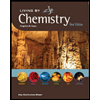 Living By Chemistry: First Edition TextbookChemistryISBN:9781559539418Author:Angelica StacyPublisher:MAC HIGHER
Living By Chemistry: First Edition TextbookChemistryISBN:9781559539418Author:Angelica StacyPublisher:MAC HIGHER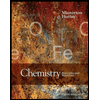 Chemistry: Principles and ReactionsChemistryISBN:9781305079373Author:William L. Masterton, Cecile N. HurleyPublisher:Cengage Learning
Chemistry: Principles and ReactionsChemistryISBN:9781305079373Author:William L. Masterton, Cecile N. HurleyPublisher:Cengage Learning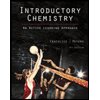 Introductory Chemistry: An Active Learning Approa...ChemistryISBN:9781305079250Author:Mark S. Cracolice, Ed PetersPublisher:Cengage Learning
Introductory Chemistry: An Active Learning Approa...ChemistryISBN:9781305079250Author:Mark S. Cracolice, Ed PetersPublisher:Cengage Learning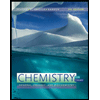 Chemistry for Today: General, Organic, and Bioche...ChemistryISBN:9781305960060Author:Spencer L. Seager, Michael R. Slabaugh, Maren S. HansenPublisher:Cengage Learning
Chemistry for Today: General, Organic, and Bioche...ChemistryISBN:9781305960060Author:Spencer L. Seager, Michael R. Slabaugh, Maren S. HansenPublisher:Cengage Learning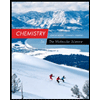 Chemistry: The Molecular ScienceChemistryISBN:9781285199047Author:John W. Moore, Conrad L. StanitskiPublisher:Cengage Learning
Chemistry: The Molecular ScienceChemistryISBN:9781285199047Author:John W. Moore, Conrad L. StanitskiPublisher:Cengage Learning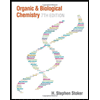 Organic And Biological ChemistryChemistryISBN:9781305081079Author:STOKER, H. Stephen (howard Stephen)Publisher:Cengage Learning,
Organic And Biological ChemistryChemistryISBN:9781305081079Author:STOKER, H. Stephen (howard Stephen)Publisher:Cengage Learning,

Living By Chemistry: First Edition Textbook
Chemistry
ISBN:9781559539418
Author:Angelica Stacy
Publisher:MAC HIGHER

Chemistry: Principles and Reactions
Chemistry
ISBN:9781305079373
Author:William L. Masterton, Cecile N. Hurley
Publisher:Cengage Learning

Introductory Chemistry: An Active Learning Approa...
Chemistry
ISBN:9781305079250
Author:Mark S. Cracolice, Ed Peters
Publisher:Cengage Learning

Chemistry for Today: General, Organic, and Bioche...
Chemistry
ISBN:9781305960060
Author:Spencer L. Seager, Michael R. Slabaugh, Maren S. Hansen
Publisher:Cengage Learning

Chemistry: The Molecular Science
Chemistry
ISBN:9781285199047
Author:John W. Moore, Conrad L. Stanitski
Publisher:Cengage Learning

Organic And Biological Chemistry
Chemistry
ISBN:9781305081079
Author:STOKER, H. Stephen (howard Stephen)
Publisher:Cengage Learning,
Chapter 4 Alkanes and Cycloalkanes Lesson 2; Author: Linda Hanson;https://www.youtube.com/watch?v=AL_CM_Btef4;License: Standard YouTube License, CC-BY
Chapter 4 Alkanes and Cycloalkanes Lesson 1; Author: Linda Hanson;https://www.youtube.com/watch?v=PPIa6EHJMJw;License: Standard Youtube License